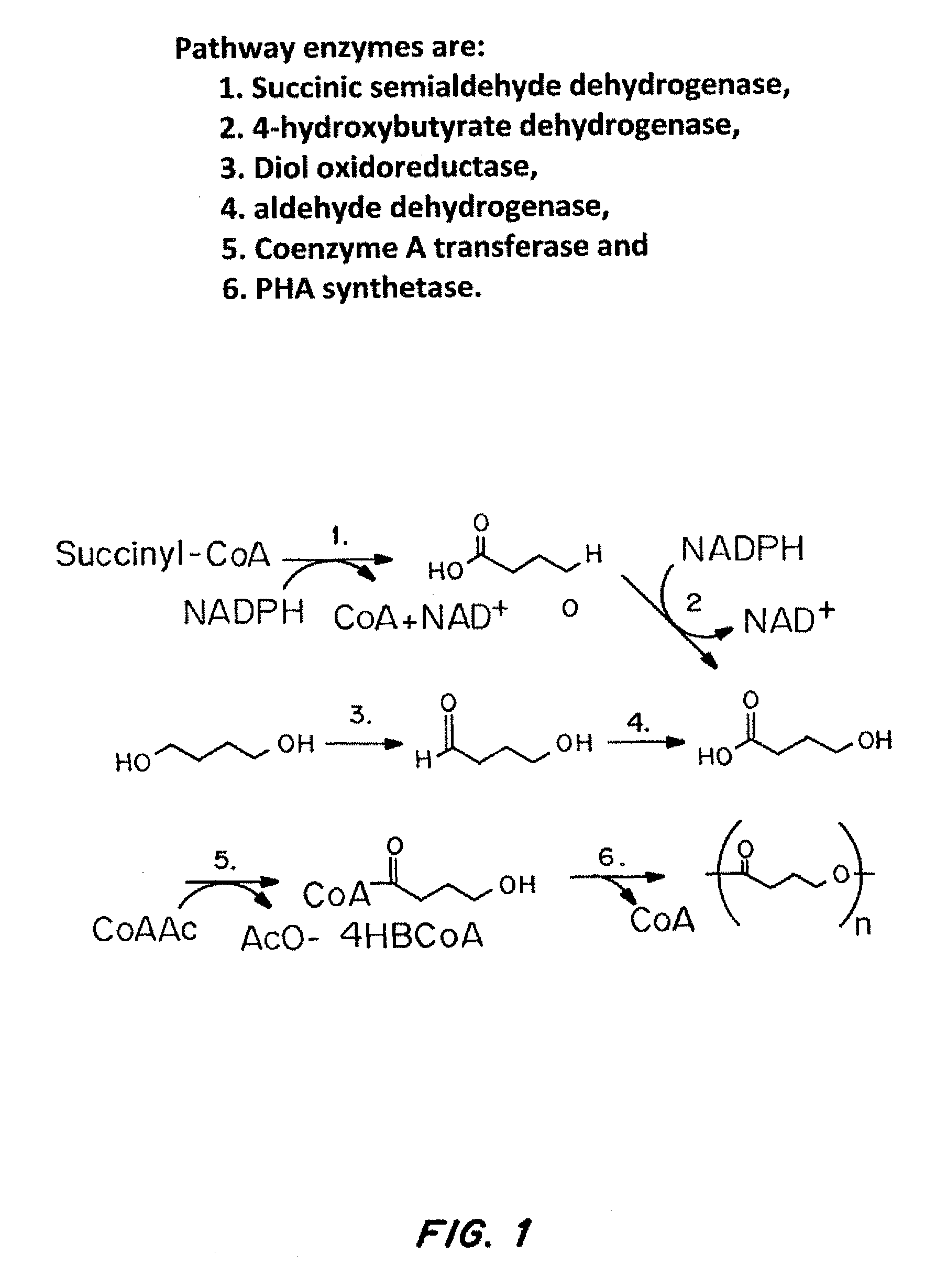Controlled hydrolysis of poly-4-hydroxybutyrate and copolymers
a technology of polyhydroxybutyrate and hydrolysis control, which is applied in the field of controlling the hydrolysis of poly4hydroxybutyrate and copolymer, can solve the problems of unwanted side reactions, difficult handling, and high cost of removal
- Summary
- Abstract
- Description
- Claims
- Application Information
AI Technical Summary
Problems solved by technology
Method used
Image
Examples
example 1
Hydrolysis of P4HB with 12M Aqueous Acetic Acid
[0049]Materials and Methods
[0050]30 grams of P4HB pellets (Tepha, Inc., Lexington, Mass.) (Mw 367 kDa) were suspended in 100 mL of 12 M aqueous acetic acid (AcOH), and incubated at 37° C. at 50 rpm in a shaker incubator. After 4 and 27.5 hours, the Mw of polymer samples taken from the reaction were 115 and 40 kDa, respectively.
[0051]Results
[0052]After 4 hours the P4HB pellets became sticky and the AcOH solution turned cloudy. After 30 hours, the whole reaction mixture appeared milky, and when cooled down, it gelled into a semi-solid. It was therefore determined that 12 M AcOH is too strong to be used as the hydrolysis medium for P4HB pellets since this concentration may partially dissolve the polymer. As a result, the collection of the hydrolysis products would less practical and the reaction conditions would be less homogeneous with some hydrolysis occurring in solution and some in the solid phase (i.e. within the pellets).
example 2
Hydrolysis of P4HB with 10 M Aqueous Acetic Acid
[0053]Materials and Methods
[0054]30 grams of P4HB pellets (Tepha, Inc., Lexington, Mass.) (Mw 367 kDa) were suspended in 100 mL of 10 M aqueous acetic acid, and incubated at 37° C. at 50 rpm in a shaker incubator. A sample was removed after 4 hours, and the weight average molecular weight of the polymer was determined by GPC (relative to polystyrene) to be 224 kDa. After 27.5 hours, the reaction was quenched by decanting the acetic acid, and rinsing the polymer with distilled water.
[0055]Results
[0056]The pellets did not clump or aggregate during the reaction time, as was seen for the similar reaction performed in 12 M acetic acid. The polymer pellets were then dried in vacuo to remove residual acetic acid and water.
[0057]The weight average molecular weight of the polymer was determined to be 85 kDa after 27.5 hours, and the polymer was recovered in high yield and without loss of material.
example 3
Hydrolysis of P4HB with 8M Aqueous Acetic Acid
[0058]Materials and Methods
[0059]A 20 gram sample of P4HB pellets (Tepha, Inc., Lexington, Mass.) (Mw 347 kDa) was suspended in 200 mL of 8 M aqueous acetic acid, and shaken at 50 rpm at 37° C. in a shaker incubator. Samples were removed periodically, and the weight average molecular weight of the polymer and polydispersity were determined by GPC (relative to polystyrene).
[0060]Results
[0061]The results are tabulated below (time in hours).
[0062]
TABLE 1Molecular Weight and PDI of P4HB over Time8M, 40° C.,oil bath, PelletsMw (kDa)PDI03472.1313352.1523152.1042842.1762632.0882552.05241611.9796681.90120601.94
PUM
| Property | Measurement | Unit |
|---|---|---|
| weight average molecular weight | aaaaa | aaaaa |
| weight average molecular weight | aaaaa | aaaaa |
| polydispersity | aaaaa | aaaaa |
Abstract
Description
Claims
Application Information
 Login to View More
Login to View More - R&D
- Intellectual Property
- Life Sciences
- Materials
- Tech Scout
- Unparalleled Data Quality
- Higher Quality Content
- 60% Fewer Hallucinations
Browse by: Latest US Patents, China's latest patents, Technical Efficacy Thesaurus, Application Domain, Technology Topic, Popular Technical Reports.
© 2025 PatSnap. All rights reserved.Legal|Privacy policy|Modern Slavery Act Transparency Statement|Sitemap|About US| Contact US: help@patsnap.com



